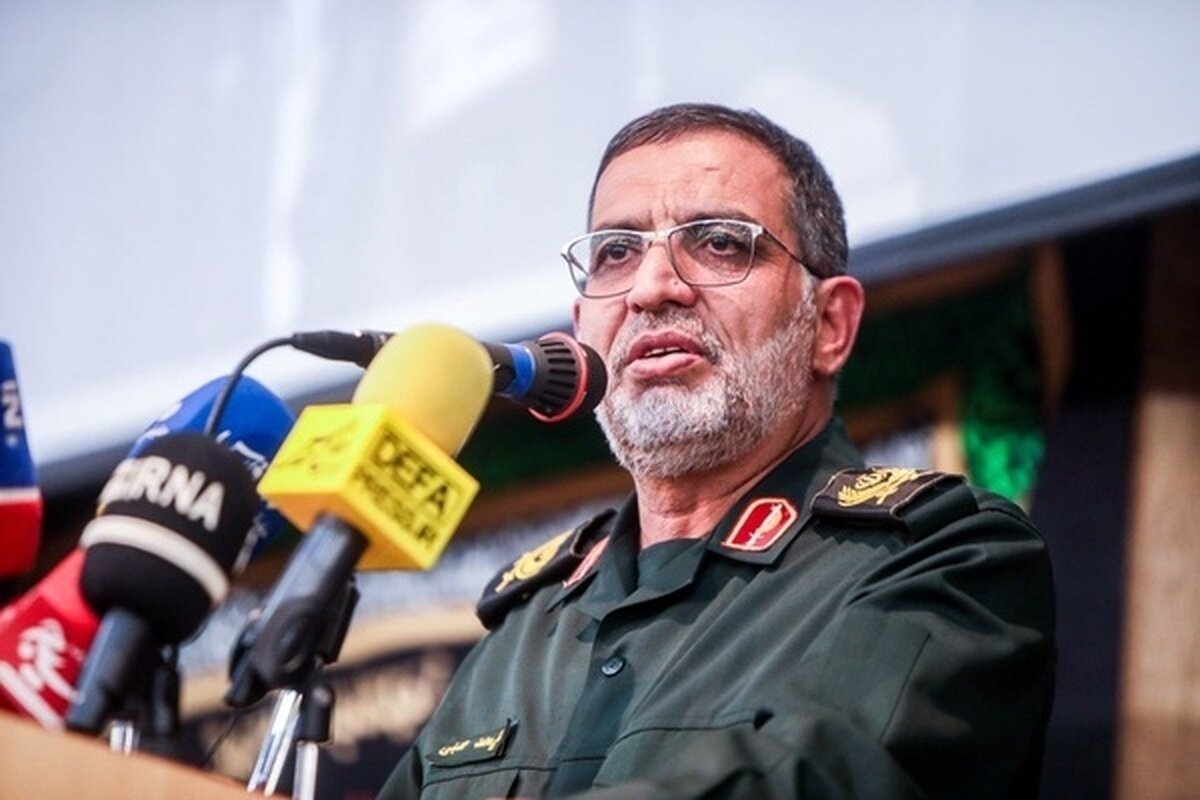Renewed aggression against Iran will change region’s geography of war: IRGC

TEHRAN – Brigadier General Ali Mohammad Naeini, deputy head of public relations and spokesperson for the Islamic Revolution Guard Corps (IRGC), has warned that any future aggression against Iran will provoke a response “far more devastating” than previous operations—one that will fundamentally alter the geography of conflict across the region.
“Any renewed attack will be met with a more destructive retaliation, and the battlefield geography will no longer remain the same,” Naeini declared during a ceremony honoring IRGC martyrs.
Naeini underscored that the Operation True Promise III was launched in response to the Zionist regime’s unprovoked aggression starting on June 13.
“Despite facing the combined military pressure of Western powers, Iran stood its ground alone. This was not just a war between Iran and Israel—it was Iran versus a Western alliance masquerading behind Tel Aviv’s frontlines,” Naeini said.
The true scale of destruction inside the occupied territories during Iran’s unprecedented missile and drone retaliation was severely underreported by the Israeli regime. A wave of military censorship, imposed by Tel Aviv and amplified by Western media silence, attempted to conceal the collapse of Israel’s strategic deterrence.
According to the U.S.-based CTP-ISW consortium, a joint initiative of the neoconservative Institute for the Study of War and the Critical Threats Project, Iran launched 543 ballistic missiles and over 1,000 drones during the operation—marking the largest Iranian strike in history.
Even the Israeli regime's own military confirmed 500–550 ballistic missiles, distributed over 43 distinct attack waves—effectively aligning with Iran’s reported scale.
The IRGC, while not disclosing the precise number of ballistic missiles launched, stated that over 3,000 projectiles were used in the operation, including drones and cruise missiles.
Despite public claims of success by Israeli and U.S. officials, post-conflict data confirms the Israeli regime's defenses were overwhelmed:
Fox News confirmed a direct Iranian missile strike on the Kirya military headquarters in Tel Aviv—a core nerve center of Israeli command.
Satellite radar analysis by Oregon State University, shared with The Telegraph, revealed six successful missile impacts on five undisclosed military installations, including an intelligence facility, airfield, and logistics hub.
A Haaretz investigation by journalists Avi Scharf and Bar Peleg identified 10 unreported strikes, far beyond the Israeli regime’s admission of 36 impacts.
Notably, a large portion of injuries in populated areas was caused by falling interceptor debris—a side effect of Israel’s frantic attempts to intercept incoming barrages.
The Israeli regime initially claimed a 90–95% interception rate. Yet by Day 7, even The Telegraph reported that at least 16% of Iranian missiles evaded interception—an admission viewed as conservative by analysts. Post-war analysis revealed that many high-value targets were not protected, exposing critical flaws in the Israeli-U.S. missile shield.
Israeli authorities imposed sweeping military censorship during the conflict. Foreign journalists were obstructed, and cameras confiscated. Military censors required prior approval for all strike-zone footage. Domestic media faced restrictions on publishing any information that might “assist the enemy” or “undermine morale.”
The IRGC proved its advanced missile deterrence can penetrate the most sophisticated defense systems in the region.
It demonstrated the financial asymmetry of its low-cost, high-impact strike model. And crucially, it psychologically destabilized the notion of Israeli military superiority.
General Naeini concluded his remarks with a warning that reverberates beyond the region. “This was only a fraction of Iran’s capabilities. The next phase, if imposed upon us, will not resemble the past. The map of confrontation will change—and so will its consequences.”
Leave a Comment